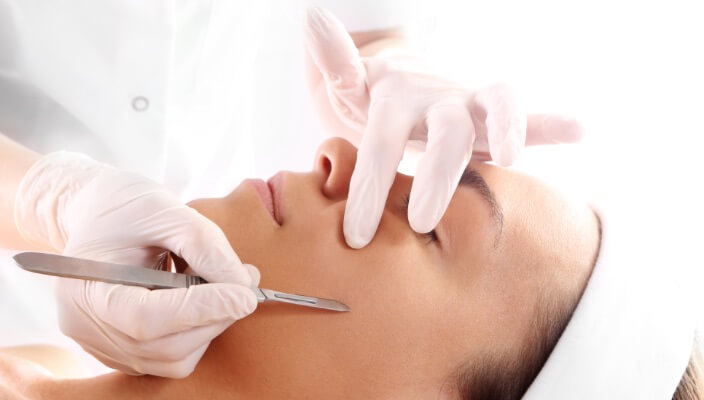BOTOX® for Migraine Relief: What You Need to Know
Understanding Botox as a Treatment for Chronic Migraines
 Chronic migraines are more than just a headache; they are a debilitating condition that can significantly impair your quality of life. The throbbing pain, sensitivity to light, and nausea that often accompany these migraines can make even the simplest daily tasks feel impossible. Finding an effective treatment is paramount for those suffering from this condition. BOTOX® treatments, widely known for their cosmetic benefits, have also proven to be a game-changer in the medical field, particularly for those battling chronic migraines.
Chronic migraines are more than just a headache; they are a debilitating condition that can significantly impair your quality of life. The throbbing pain, sensitivity to light, and nausea that often accompany these migraines can make even the simplest daily tasks feel impossible. Finding an effective treatment is paramount for those suffering from this condition. BOTOX® treatments, widely known for their cosmetic benefits, have also proven to be a game-changer in the medical field, particularly for those battling chronic migraines.
What Exactly is BOTOX® and How Does It Work for Migraines?
BOTOX® is a purified form of botulinum toxin type A, a neurotoxin that temporarily paralyzes muscles by blocking nerve signals in the treated area. Initially popularized for its wrinkle-reducing capabilities, BOTOX® gained FDA approval in 2010 as a treatment for chronic migraines, marking a significant milestone in migraine management.
But how does a treatment known for cosmetic applications help with migraines? The science behind it is fascinating. Chronic migraines are thought to be caused by overactive nerve endings that send excessive pain signals to the brain. BOTOX® works by blocking the release of certain chemicals involved in pain transmission, interrupting the pathway leading to migraine pain. This disruption can prevent migraines from occurring as frequently or as intensely, offering a much-needed reprieve for those who suffer from this condition.
Who Should Consider BOTOX® for Migraines?
Not everyone who experiences migraines is an ideal candidate for BOTOX® treatment. BOTOX® is specifically recommended for individuals who have been diagnosed with chronic migraines. To be classified as chronic, migraines must occur at least 15 days per month, with each headache lasting four hours or more.
Best Candidates for BOTOX® Treatment:
Diagnosed Chronic Migraine Sufferers: If you’ve been diagnosed with chronic migraines or various other headache types, BOTOX® could be a suitable treatment option.
Those Unresponsive to Other Treatments: If traditional migraine treatments—like oral medications—haven’t worked for you, or if you’re seeking an alternative to daily medication, BOTOX® might be a viable option.
However, BOTOX® is not for everyone. For instance, if you experience migraines less frequently—fewer than 15 days per month—BOTOX® may not be the best course of action. Additionally, pregnant or breastfeeding women should consult their healthcare providers to discuss the safety of BOTOX® in their specific situations. Lastly, individuals with certain neuromuscular disorders should avoid BOTOX®, as it can exacerbate these conditions.
The BOTOX® Treatment Process for Chronic Migraines
Understanding what to expect during your BOTOX® treatment can help alleviate any concerns. The procedure is relatively straightforward and involves the following steps:
Injection Sites
Number of Injections
Treatment Frequency
The Benefits of BOTOX® for Migraine Relief
For chronic migraine sufferers, BOTOX® offers several compelling benefits:
Significant Pain Reduction: Studies show that BOTOX® can reduce the number of migraine days by up to 50%, providing much-needed relief.
Minimal Side Effects: Compared to many oral medications, BOTOX® has a relatively low side-effect profile. Most patients experience only mild discomfort at the injection sites.
Potential Risks and Side Effects
As with any medical treatment, BOTOX® does come with potential risks and side effects. While these are generally mild, it’s essential to be aware of them:
Headaches: Ironically, some patients may experience mild headaches after the injections. However, these are typically short-lived.
Injection Site Reactions: Swelling, redness, and bruising can occur at the injection sites but usually resolve within a few days.
Neck Pain and Stiffness: Some patients report temporary neck discomfort following the treatment.
Post-Treatment Expectations
After your BOTOX® treatment, it’s crucial to follow your provider’s post-op instructions carefully:
Avoid Strenuous Activity: Although BOTOX® injections are minimally invasive, it’s advised to avoid heavy physical activity for at least 24 hours post-treatment to reduce the risk of complications.
Onset of Results: You won’t experience immediate relief. The benefits of BOTOX® typically become noticeable within 10 to 14 days after treatment, so patience is key.
Is BOTOX® Right for You?
If you’re struggling with chronic migraines and other treatments haven’t provided the relief you need, BOTOX® could be the solution you’ve been searching for. At Dermatology Affiliates, we are committed to helping you explore the best options for managing your migraines effectively. Our team will work with you to tailor a treatment plan that aligns with your needs, ensuring you can regain control over your life.
Ready to take the next step? Schedule an appointment with Dermatology Affiliates today to learn how BOTOX® can relieve chronic migraines and help you reclaim your life.
Featured Products
Check your local office for current stock!
Check your local office for current stock!
Featured Blogs

- Skin Care
- Cosmetic Treatments
I had my second Elos Sublative RF Microneedling Treatment (which is an amazing new treatment we’ve added for addressing fine lines, wrinkles, acne scars and texture).
Read More
- Skin Care
- Cosmetic Treatments
The cosmetic treatment “microneedling” has created quite a buzz in the beauty industry as a restorative skin treatment. Now, its rejuvenating abilities extend to the scalp too.
Read More
- Skin Care
- Cosmetic Treatments
Discover a smoother complexion with dermaplaning. Ideal for most skin types, this procedure removes fine hairs and dead skin, enhancing your skin.
Read More


